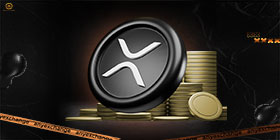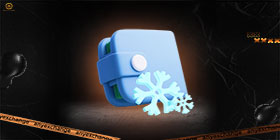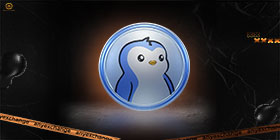
In 2025, DeFi projects and Web3 technologies continue to rewrite the rules of the digital economy. During the first few months of the year, the market experienced unprecedented growth in the number of new launches and key performance metrics.
A striking example is Sui Network, which reached a record total value locked (TVL) of nearly $2 billion at the beginning of July. Launched by the Mysten Labs team in May 2023, this young Layer-1 smart contract platform has become a key player in the decentralized finance and Web3 ecosystem in just two years.
Another breakthrough is Raydium, a high-performance decentralized exchange and market maker based on Solana whose trading volume and commissions have surpassed those of DEX on Ethereum in some metrics. This event marked an evolutionary leap for the Solana ecosystem and a trend toward increased blockchain interoperability.
Another popular segment is blockchain games. One project, the Web3 shooter Reaper Actual from Distinct Possibility Studios, raised $30.5 million in investments during development, confirming GameFi’s resurgence. This success reflects the active integration of advanced game mechanics into the Web3 ecosystem.
In our article, we explore which DeFi and Web3 products will dominate in 2025 and why. Learn about the main trends and investment opportunities in cutting-edge projects!
What are DeFi and Web3, and why are they growing?

Decentralized finance (DeFi) is an alternative mechanism for conducting financial transactions that eliminates intermediaries, such as banks and payment systems. Transactions take place directly between users via smart contracts on the blockchain. DeFi projects allow users to earn money through yield farming, staking, lending, and trading without paying traditional fees or dealing with restrictions.
Web3 technologies represent the next stage in the evolution of the internet. They are decentralized networks in which users own their data, digital assets, and identity. In practice, this means transitioning from centralized platforms to decentralized applications (dApps), in which control and profits are distributed among participants rather than companies.
DeFi and Web3 projects share a commitment to decentralization, openness, and eliminating external control. Both areas are based on blockchain technology and enable users to participate fully in the digital economy, whether in finance, gaming, social media, or data management.
Interest in both technologies surged sharply in 2025. According to DeFiLlama analysts, the total value locked in DeFi protocols reached $148.3 billion. By the end of the first quarter of 2024, this figure had dropped to around $54 billion. However, by the first half of 2025, it had grown to approximately $129 billion — marking a year-over-year increase in TVL of ~137%. Mordor Intelligence forecasts market growth in the Web3 project segment from $3.47 billion in 2025 to $41.45 billion by 2030.
Experts identify the mass integration of DeFi platforms with traditional financial instruments, an increase in the number of blockchain games, and significant progress in the real asset tokenization (RWA) segment as the main drivers of this development. Additionally, blockchain interoperability development allows users to easily move liquidity between networks, increasing the efficiency of the entire Web3 ecosystem.
Thus, DeFi and Web3 are no longer experimental concepts; they are mature, growing markets with the potential to transform the global economy.
Top new DeFi and Web3 projects in 2025

Katana, a scalable L2 blockchain from Polygon Labs focused on maximum modularity and speed of dApp deployment, stands out among dozens of new launches. Katana uses the Polygon CDK (Chain Development Kit) framework and stands out for the following reasons:
- It offers significantly lower fees compared to most other L2 solutions.
- It offers built-in support for interoperability with other networks in the Polygon ecosystem.
- It uses zk-proofs, which provide Ethereum-level security and high scalability.
- Katana is designed to launch custom networks for specific projects, ranging from DeFi to gaming and enterprise solutions.
Katana is integrated with major decentralized applications, including decentralized exchanges, NFT protocols, and staking platforms.
Lido Finance remains one of the leaders in total value locked, with its liquid staking model attracting a huge number of participants. According to DefiLlama, the project controlled about $22.6 billion TVL in June 2025.
Another significant project is EigenLayer, a restaking protocol that enables users to reuse their staked assets to secure other networks and applications. This innovative model improves blockchain interoperability and creates new income opportunities for users.
The blockchain gaming segment continues to boom. As mentioned above, the highly anticipated Reaper: Actual from Distinct Possibility Studios attracted a record-breaking $30.5 million in funding from Bitkraft Ventures and Brevan Howard Digital. Other investors included the Tezos Foundation, Hashed, Delphi Ventures, and more. Reaper is a multiplayer PvPvE game that combines tactical gameplay with a robust blockchain economy. What makes the project unique is that it gives players full ownership of in-game assets through NFTs, as well as the ability to integrate user modifications and AI-based voice control. Built entirely on smart contracts, the game gives players the right to participate in the management of the metaverse.
Other notable projects inсlude Unizen, Ethena, and Kamino Finance, which are new cryptocurrency protocols that implement yield optimization algorithms. These protocols intensify competition among DeFi platforms by applying new approaches.
- Unizen is a hybrid CeDeFi platform combining the advantages of centralized and decentralized exchanges. It provides users with high liquidity and access to multi-network assets in a single interface. In 2025, Unizen will actively expand its integration with cross-chain protocols and attract institutional traders.
- Ethena is a synthetic dollar project backed by futures positions and liquid staking. According to DefiLlama and Tangem, Ethena’s TVL (USDe) reached ~$4.8 billion by June 2025.
- Kamino Finance, in turn, has become the flagship of automated liquidity on Solana. The platform offers auto-rebalancing yield farming strategies that make DeFi more accessible to retail investors without technical expertise.
TVL growth: What is driving the market?

In 2025, the growth of total value locked (TVL) in decentralized finance continues at a steady pace, reflecting the ecosystem’s maturity and expansion. The main drivers are the development of liquid staking, the implementation of asset tokenization, and increased trading activity on decentralized exchanges.
The liquid staking model used by Lido Finance remains one of the key catalysts for growth. This model allows participants to maximize the liquidity of their assets while generating income and using tokens (e.g., stETH) in other DeFi projects simultaneously.
The asset tokenization segment deserves special attention. An increasing number of Web3 projects are offering tokenized bonds, stocks, assets, and commodities, thereby bringing DeFi platforms closer to the real sector. Such solutions are already being tested in pilot programs in Asia, Europe, and the US.
Activity on decentralized exchanges is also breaking records. According to CoinGecko, the total trading volume of DEXs approached $294 billion in the first quarter of 2025, which is 35% higher than in the fourth quarter of 2024. This indicates growing confidence in decentralized applications and an outflow of liquidity from centralized platforms.
Interestingly, despite the fact that the DeFi sector is actively developing and becoming an increasingly tempting target for hackers, the segment’s total losses from cyberattacks decreased by almost 29% over the year, according to SlowMist. This occurred despite an increase in the number of incidents. This positive trend indicates an increased priority placed on cybersecurity and smart contract audits in DeFi protocols.
Today, we can conclude that the growth in total locked value in 2025 is the result not only of technological advances but also of increased investor interest in balancing innovation, profitability, and security.
How to invest in DeFi and Web3 projects?
Thanks to the developed infrastructure and a variety of available tools, crypto investments in DeFi projects and Web3 technologies have become much easier. However, it is important to approach investments with a clear head and an understanding of the risks involved.
- The first step is to choose a reliable platform. Popular DeFi platforms, such as Uniswap, Aave, Curve, and GMX, offer various strategies, including lending, staking, and yield farming. When choosing a project, focus on metrics such as total value locked (TVL), number of users, profitability, code quality, and smart contract audit availability. Start investing with proven platforms.
- The second step is exploring opportunities for staking and restaking. Platforms such as Lido, EigenLayer, and Stader allow you to earn a stable income without locking up your assets’ liquidity completely. This is particularly important in the Web3 ecosystem, where assets can be used simultaneously in other decentralized applications.
- Beginners should start small: with small amounts, simple protocols, and minimal complexity. Before investing, it is advisable to study the technical documentation and security mechanisms and understand how cryptocurrency protocols work. Remember that there are no reverse transactions in blockchain technology, so a responsible approach is required.
- Following analytical sites such as DefiLlama, DappRadar, and Token Terminal is also useful because they help you understand the dynamics of TVL, trading volumes, and trends in DeFi and Web3 projects. A competent approach and basic expertise will help you preserve your capital and earn a decent return in the new digital world.
Conclusion
By 2025, DeFi projects and Web3 technologies are no longer perceived as venture experiments. Today, they are a mature part of the crypto economy and a decent alternative to traditional finance and centralized digital platforms. The total growth of TVL in DeFi protocols — over $116 billion, according to DefiLlama — demonstrates mass adoption and trust among developers, as well as retail and institutional investors.
Successful use cases, such as liquid staking on Lido, asset tokenization, and the explosive growth of blockchain games, demonstrate the flexibility and scalability of blockchain technologies. The ecosystem continues to evolve, improving blockchain interoperability and smart contract security while increasing returns for users. In the coming months, we expect to see further growth in decentralized applications, new forms of yield farming, and expanded links between Web3 and traditional sectors of the economy.
Thus, DeFi and Web3 are changing not just the technological landscape, but also shaping a new digital reality in which users become the full owners of their financial and digital future.
Thank you for your attention. Invest safely and profitably!
AnyExchange is an exchanger through which you can convert cryptocurrencies at the most favorable rate, as well as make fast money transfers around the world.
FAQ
What are DeFi projects?
They are financial services and applications that operate based on smart contracts on the blockchain. They are an alternative to the traditional financial systеm, enabling transactions to be carried out without intermediaries and ensuring speed, transparency, and accessibility.
Why is TVL growing in 2025?
The growth in TVL is due to increased liquidity in the DeFi segment, greater institutional interest, new cutting-edge platforms, and growing confidence in decentralized infrastructure.
What is liquid staking?
It is a mechanism that allows users to stake cryptocurrencies while maintaining asset liquidity. Users receive tokens that can be used in other DeFi projects.
How to start investing in Web3 projects?
Choose proven DeFi platforms, study the technical documentation, and start with small amounts to minimize risk.
What risks are associated with investing in DeFi and Web3?
The main risks are vulnerabilities in smart contracts, hacker attacks, and market volatility.






